
Publications - Art Laboratory Berlin
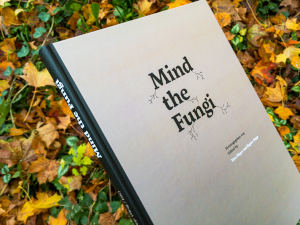
Ed. by Vera Meyer and Regine Rapp
Berlin 2020
TU Berlin University Press, in English and German
151 pages | 193 coloured images | 21 black & white images |
28 x 21 cm | Book design: Eva-Maria Bolz | Copy editor: Julia Kühn |
Printing house: ProBusiness
Digital publication | ISBN 978-3-7983-3169-3 | free access
http://www.artlaboratory-berlin.org/assets/pdf/Mind_the_Fungi.pdf
Hardcover | ISBN 978-3-7983-3168-6 | 24,90 EUR
https://verlag.tu-berlin.de/produkt/978-3-7983-3168-6/
The scientific and artistic paths in the project Mind the Fungi, which we followed together with the public from 2018 to
2020, including the Art & Design Residencies, can now be traced in text and images in this book. It was intended to provide citizens with an opportunity for scientific collaboration. The project was intended to give a broad public an understanding of the importance of fungal biotechnology for a sustainable future and to establish a research network at the TU Berlin, in which, among other things, novel fungus-based biomaterials were researched with Citizen Scientists.
Texts
and authors:
Fungi as sustainable biomaterials | Bertram Schmidt, Bastian Schubert,
Kustrim Cerimi, Carsten Pohl, Vera Meyer
Lichens as natural product reservoirs | Zakieh Zakeri, Stefan Junne,
Peter Neubauer
Art and science as community mycelia | Regine Rapp, Christian de
Lutz, Theresa Schubert, Bertram Schmidt, Alessandro Volpato
Artist and designer in laboratory residencies | Theresa Schubert,
Fara Peluso
How to exhibit Mind the Fungi? On mycohuman co-curating | Regine
Rapp, Christian de Lutz
Teaching and learning transdisciplinary | Kustrim Cerimi, Bastian
Schubert, Birke Weber, Carsten Pohl,
Bertram Schmidt, Vera Meyer
Merging science and art through fungi (reprint) | Vera Meyer
On mycohuman performances: fungi in current artistic research (reprint)
| Regine
Rapp
With the generous support of the Technische Universität
Berlin as part of the program “Citizen Science - Forschen mit der
Gesellschaft” and the Open Access Publication Fund.
Regine Rapp/
Christian de Lutz: "HYBRID ECOLOGIES. Artistic Research in 21 Century"
in:
Intersections Between Art and Science in the Anthropocene.
Quo Artis
https://quoartis.org/projects/intersections-between-art-and-science-in-the-anthropocene/
Publication
date: 2021
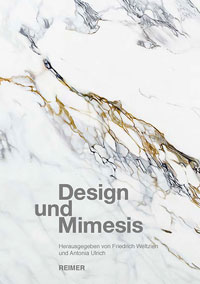
Regine Rapp:
Das Konzept Nonhuman Subjectivities. Aktuelle künstlerische
Praktiken im Posthumanismus, p. 67-85, in:
Design and Mimesis
Friedrich Weltzien and Antonia Ulrich (eds.)
Reimer Verlag, Berlin 2019
http://www.reimer-mann-verlag.de/controller.php?cmd=detail&titelnummer=101610&verlag=4

Half Life. Machines/ Organisms, Artistic Positions in the context of Climate Change and Extinction.
Käthe Wenzel/Manfred Blohm (eds.)
Fabrico Verlag Hannover, 2018.
https://www.fabrico-verlag.de/bookshop/halflife/
41 artistic positions from 15 countries provide critical and visionary views onto socio-emotional service machines - prxies and social crutches; Ersatz: Machine environments and artificial organisms; Utopia: Prosthesis, Utopian Instruments and substitute bodies; Connection: Mediator machines and trans-species communication; Autonomous and obsolete machines, past cultures of machines.
With
Agnes Meyer-Brandis, Alex May, Alexander Schellbach, Andras Böröcz, Anna Dumitriu, Christa Sommerer, Claudia Schmitz, Courtney Johnson, Emma Critchley, Giuliana Cunéaz, Guy Ben-Ary, Hannes Waldschütz, Ionat Zurr, Jeongmoon Choi, Ji Hyun Park, Jinyoung Lee, John Roach, Käthe Wenzel, Kerstin Ergenzinger, Laurent Mignonneau, Lisa Glauer, Lorenzo Oggiano, Lukas Truniger, Malte Bartsch, Marie-Eve Levasseur, Michael Schulze, Nicola L. Hein, Oron Catts, Pey-Ying Lin, PSJM, Robbin A. Silverberg, Robertina Šebjanic, Saša Spacal, Špela Petric, Susanna Hertrich, Susanna Schoenberg, Suzanne Anker, Tobias Grewenig, VALIE EXPORT, Verena Friedrich, Via Lewandowsky, 431art
...and essays by KätheWenzel/ Manfred Blohm, Regine Rapp/ Christian De Lutz, Lisa Glauer/ Helge Oder.

Interdisciplinary Conference
Nonhuman Agents in Art, Culture and Theory
24 -26 November, 2017
As a theoretical addition to our ongoing series Nonhuman Agents (June - December 2017) Art Laboratory Berlin - along with our partners, The Institute for Arts and Media, University of Potsdam - brought together international artists, scholars, and scientists from different disciplines to discuss artistic, philosophical, ethical and scientific approaches to nonhuman agency.
http://artlaboratory-berlin.org/html/eng-event-40.htm
Go to our conference website and find the video recordings of all conference speakers!
You will have unlimited access to every single conference presentation (videos and abstracts).
Art Laboratory Berlin is glad to provide this opportunity for free.
If you like, make a donation (our contribution receipt are tax deductible in Germany)

[macro]biologies
& [micro]biologies.
Art and the Biological Sublime in the 21st Century.
Ed. by Regine Rapp & Christian de Lutz, Berlin 2015
98 pages
96 color images
20 x 25 cm (closed)
Concept: Regine Rapp & Christian de Lutz
Layout: Eva Jera Hanžek
Printed by Blurb
Softcover: 39 EUR
Hard Cover, Dusk Jacket: 48.90 EUR
Hard Cover, Image Wrap: 49.90 EUR
eBook: 7.99 EUR
PDF: 4.99 EUR
This book
provides a sustainable supplement to the [macro]biologies & [micro]biologies
series which took place at Art Laboratory Berlin between 2013 and 2015.
The whole programme consisted of four group shows, several seminars and
talks on contemporary art and the life sciences. Four exhibitions - the
biosphere, organisms, the bacterial sublime, and proteo - featured renowned
international artists working across the borders between the arts and
different fields of biology. Next to a theoretical reflection about the
exhibited artists the publication also includes artist statements and
documents a number of outstanding events from the series - workshops and
seminars with artists, biologists, and scholars, discussing synthetic
biology, speculative design, DIY Bio, and practical exercises in citizen
science.
More information about the series
Authors
& Contributions
Regine Rapp & Christian de Lutz: Art and the Biological Sublime
in the 21st Century, p. 8-52
Katya Gardea Browne: Rhythms of a Living World, p. 61
Richard Pell: The Center for PostNatural History, p. 62
Mathias Kessler: Nature and Us - Between Boundless Desires and
Limited Compassion, p. 64
Alexandra Regan Toland: Mapping the Urban Grind Mill, p. 66
Suzanne Anker: Petri's Panoply, p. 69
Maja Smrekar: BioBASE - The Eco Utopian Agent, p. 71
Brandon Ballengée: The Cry of Silent Forms, p. 72
Anna Dumitriu: The Bacterial Sublime, p. 75
Joanna Hoffmann: πρωτεο
/ proteo, p. 76
Pinar Yoldas: Reflecting my Artistic Practice and Collaborating
with Art Laboratory Berlin, p. 79-80
Denisa Kera: Biostrike as Soil Art: Biotech Guerrillas in the Post-Antibiotic
Age, p. 83-88
Desiree Förster: Under the Surface, under the Skin. The Use
of Synthetic Biology within the Artistic Practice of C-LAB, p. 93
The book can be ordered via blurb.com, blurb.de and blurb.co.uk.
Order
here (DE)
Order
here (US)
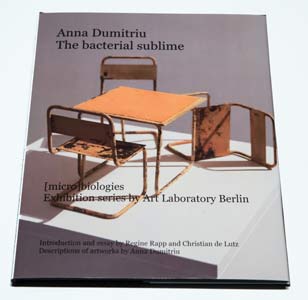
Anna
Dumitriu. The bacterial sublime.
Ed.
by Regine Rapp & Christian de Lutz, Berlin 2014
34 pages
15 color images
20 x 25 cm (closed)
Printed by Blurb
Softcover: 26.54 EUR
Hard Cover, Dusk Jacket: 34.91EUR
Hard Cover, Image Wrap: 35.84EUR
eBook: 10.99 EUR
PDF: 7.57 EUR
The catalogue presents the retrospective exhibition [micro]biologies I: the bacterial sublime with artworks by Anna Dumitriu at Art Laboratry Berlin in autumn 2014. The show was curated by Regine Rapp and Christian de Lutz, as part of the [macro]biologies & [micro]biologies exhibition series. The catalogue also includes the essay The bacterial sublime. Reflectinos on the art of Anna Dumitriu, a unique 'infective agent' in the culture of scientific investigation by Regine Rapp & Christian de Lutz. More information about the exhibition
The book
can be ordered via blurb.com, blurb.de and blurb.co.uk.
Order
here (DE)
Order
here (UK)

We are proud to share with you our online-publication of the international interdisciplinary
2-day SYNAESTHESIA-Conference, held by Art Laboratory Berlin in the summer 2013:
Synaesthesia.
Discussing a Phenomenon in the Arts, Humanities and (Neuro-)Science
http://www.artlaboratory-berlin.org/html/eng-event-17.htm
Go to our conference website and find the video recordings of all conference speakers!
You will have unlimited access to every single conference presentation (videos and abstracts).
Art Laboratory Berlin is glad to provide this opportunity for free.
If you like, make a donation (our contribution receipt are tax deductible in Germany).
Christian
de Lutz: "Is the Desert Still the Desert in a Digital World?"
p. 85-6 in
Warnayaka Art Centre: Life in the Digital Desert
Gretta Louw, Barbara Glowczewski , Jennifer Biddle (eds.)
IDAIA 2013
http://www.idaia.com.au/en/book-warnayaka-art-centre-life-in-the-digital-desert/

Ditte
Lyngkær Pedersen:
Why is Green a Red Word?
Published by Art Laboratory Berlin, Berlin 2013
Limited Edition, signed by the artist
Edition: 250
Since 2003,
Ditte Lyngkær Pedersen, herself a synaesthete, has created an extensive
video archive of interviews about the multi-sensory perception of synaesthesia
that document the experiences of individuals and at the same time make
the unbridgeable gap between this topic and the audience clear.
Her project Why Is Green a Red Word? is comprised of interviews with synaesthetes and scientists, but also includes conceptual video works such as What the Hell does Purgatory Look Like? and drawings depicting the spatial imagination of number forms by different synaesthetes. Contemporaneous with the exhibition opening will be the publication of Ditte Lyngkær Pedersen’s artist book Why is Green a Red Word?
Graphic Design by Kenan Darwich
http://www.artlaboratory-berlin.org/html/eng-exh-archive.htm
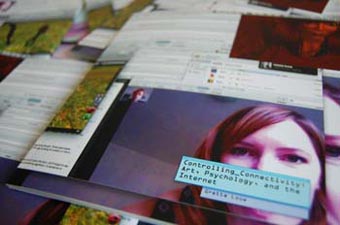
Art, Psychology and the Internet.
Berlin 2012
59 pages, color photographs
21 x 21 cm (closed), 21 x 42 cm (open)
Softcover, 4-color images
Collectors Edition, signed by the artist
Edition: 100
Christian de Lutz: "Too Artful to be a Virtual Soul": Performance, Psychology and Social Media, p. 27-31
Regine Rapp: "It Feels Like They're Talking Inside My Own Head": Formats and Image Strategies in Gretta Louw's Controlling_Connectivity, p. 36-38
Emmy Doyle: Psychometric Testing Pre- and Post-Performance, p. 46-47
DeeAnna Merz Nagel: Internet Addiction. Really?, p. 48-49
Leon Tan: Reconfiguring Co-Presence: An Ontology of Networked Social Relations, p. 51-53
In her project Controlling_Connectivity Louw explores to what extent an
extreme use of the Internet and our belief in the online connectivity
can have psychological consequences. Her inquiry questions self-censorship
and socially acceptable forms of behaviour in the face of the constant
pressure put in place by society's inexorable increasing need for connectivity.
For 10 days in November 2011 the artist was available 24 hr/day for discussions, emails, comments, or interviews - of both private and professional nature - for any Internet user wishing to take part in the project. All necessary supplies were stored within the gallery and the windows were blacked out to en-sure that the environment was not normalized by natural light or the social rhythms outside, but de-fined purely by the internet connection to external participants. A number of planned online events (the artist's 30th birthday; live talks and performances with partners in New York, Japan, Denmark and Berlin; interviews with press, etc.) were scheduled at intervals throughout the performance.
More information:
http://artlaboratory-berlin.org/html/eng-exh-24.htm
http://controllingconnectivity.tumblr.com/
http://grettalouw.com/conconn%20artist%20book.pdf
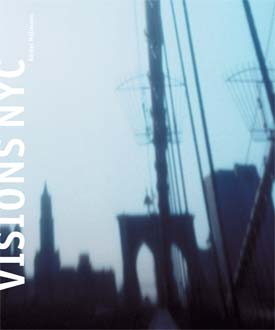
Portraits and Interviews from New York.
Berlin 2011
272 pages, 136 camera obscura photographs
Interviews (each 4-15 min.), on 4 CDs
Essay by Regine Rapp: The Inner Eye and Extended Time. Reflecting upon Bärbel Möllman's Project VISIONS NYC. (German and English)
25 x 30 cm
(closed), 50 x 30 cm (open)
Hardcover, 4-color images
Collectors Edition, signed by the artist
Edition: 25 exemplars
In the photo book the portraits from New York are collected in a volume as large format color photo-graphs. Sometimes the wide-format images extend over double pages. The photo book is able, as a special bibliophile medium, to give space to individual life concepts. The pages constitute a central moment in the reception process, sequentiality and seriality by the ordering of book pages, to meet the heart of urban agglomeration and diversity of urban life. Not least through its archival nature the artist's book provides an ideal format for this unusual and material rich project.
More information
about the project and the exhibition
http://artlaboratory-berlin.org/html/eng-exh-23.htm
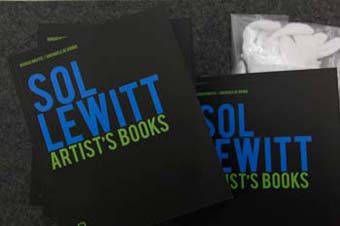
SOL
LEWITT. Artist's Books.
Ed. By Maffei, Giorgio/ de Donno, Emanuele.
Mantua: Corraini Edizioni 2010
ISBN 978-88-903459-2-0
The exhibition SOL LEWITT. Artist's Books opening at Art Laboratory Berlin on 21 January presents the complete oeuvre of 75 artists' books produced by the American conceptual artist Sol LeWitt, dating from 1967 to 2002. This exhibition pays tribute to the unique bibliophile production of the artist, who died in 2007.
The American
artist Sol LeWitt (1928 - 2007) was an influential figure in minimalism
and is considered one of the most important representatives as well as
co-founder of American conceptual art. The term "conceptual art"
goes directly back to LeWitt: "If the artist carries through his
idea and makes it into visible form, then all the steps in the process
are of importance. The idea itself, even if not made vis-ual, is as much
a work of art as any finished product. All intervening steps - scribbles,
sketches, draw-ings, failed works, models, studies, thoughts, conversations
- are of interest. Those that show the thought process of the artist are
sometimes more interesting than the final product."
(Paragraphs, Artforum, June 1967)
More information
about the exhibition:
http://artlaboratory-berlin.org/html/eng-exh-21.htm
More information
about the Sol LeWitt_Symposium:
http://artlaboratory-berlin.org/html/eng-event-10.htm
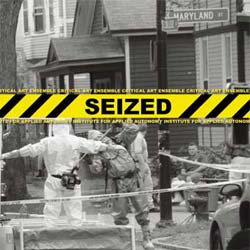
Berlin 2009
44 p., color,
text in English and German
ISBN: 978-3-9813234-0-5
The exhibition SEIZED deals with the FBI raid on the home of CAE member and art professor Steve Kurtz in Spring 2004 and the four year law case that followed. In May 2004 Steve's wife Hope died en-tirely unexpectedly because of an undiagnosed heart defect. Emergency responders from the Fire De-partment who answered Kurtz's call saw a chemistry laboratory, which was part of preparations for an upcoming show, in the couple's house. The Fire Department found this suspicious and informed the FBI. During the three-day-raid the authorities not only confiscated Kurtz's computers, archives, art-works and a set of books he was using for research on his upcoming book project, but also his wife's corpse. Steve himself was interrogated for 22 hours with the aim of charging him with "bioterrorism" and even murder. Later the charges were changed to to "wire and mail fraud", which finally, in 2008, was dropped due to all evidence of a crime being "insufficient on its face."
In their installation Body of Evidence the artists turn the perpetrator-victim-relationship upside-down. As the FBI had stolen their artistic material, they, in return, confiscated the debris left behind on Steve Kurtz's lawn by the FBI agents - pizza boxes, Gatorade bottles, hazmat suits and biological sample bags, as well as written notes and a single cigar butt. The exhibition's curators Regine Rapp and Chris-tian de Lutz write about this in the exhibition catalogue:??"The display of the notes and papers which the federal agents wrote during their raid resembles a strategy of counter-appropriation in which CAE and IAA convert those objects left behind as "evidence" for their own investigation. All in all, this turns the 'case' inside out and subverts the power structure. The items confiscated are exchanged for items left behind, which in turn form the basis for the exhibition. In a strange act of reciprocity, the artists are able to invert the whole investigator/perpetrator system. The blank space created by the seizure of CAE's artworks is filled by the debris of the state; and with this the absence of the seized objects is made more tangible."
More information:
http://artlaboratory-berlin.org/html/de-ausstellung-15.htm
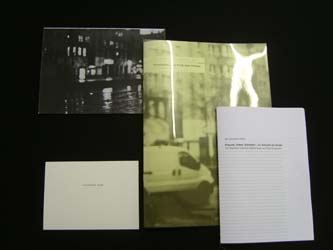
Prinzenallee
- Ein Stück ohne Dialoge.
Ed. by Birgit Szepanski and Regine Rapp for Art Laboratory Berlin. Berlin
2009.
Artist Book,
36 pages
Texts
in German language
ISBN 978-3-9813234-1-2
As part of the exhibition series "Art and Text" Birgit Szepanski will present a site specific work for Art Laboratory Berlin. Prinzenallee. A Play without Dialog is an installation encompassing both exhibition rooms, and relating to the street outside the art space in Berlin-Wedding. Film, photography and text envisage traces of this street. In an explicitly minimalist manner the street unfolds into the exhibition space. In her texts Birgit Szepanski consciously lets different literary genres intermingle: Description and narration, transcripts and monologues transform the play into an urban labyrinth, where fiction and reality seem to oscillate. The exhibition space becomes a crime site and the visitor a voyeur, who enters intimate urban zones through image, sound and text.
"The
graphic and spatial transformation of the urban theme in the exhibition
space resembles Gaston Bachelard's description of Topo-analysis as the
"study of the locality in our inner life". This publication
shows excerpts of artistic work - photography as well as five fictive
texts - that formed the exhibition, and mirrors in their formal composition
of Birgit Szepanski's special aesthetic of text and image instal-lations.
The chosen bibliophile medium accommodates the artists formal language
especially well."
(Regine Rapp, from the essay "Vom Oszillieren urbaner Zeichen"
("On the oscillation of urban signs") of the publication)
More information
about the project:
http://artlaboratory-berlin.org/html/eng-exh-6.htm
| Art Laboratory Berlin is sponsored by: | ||||